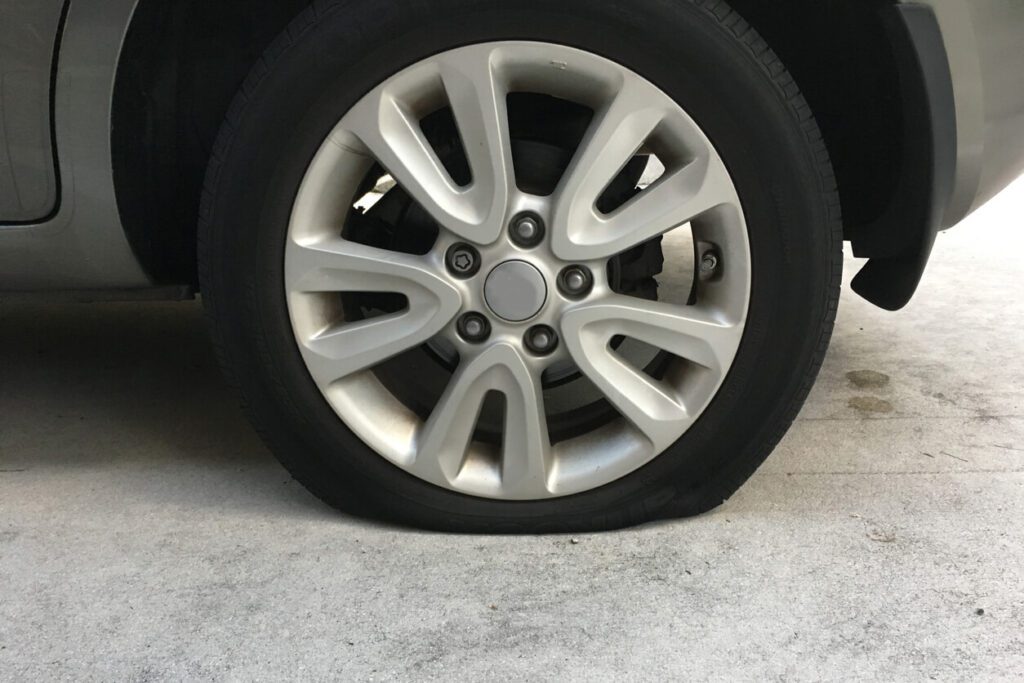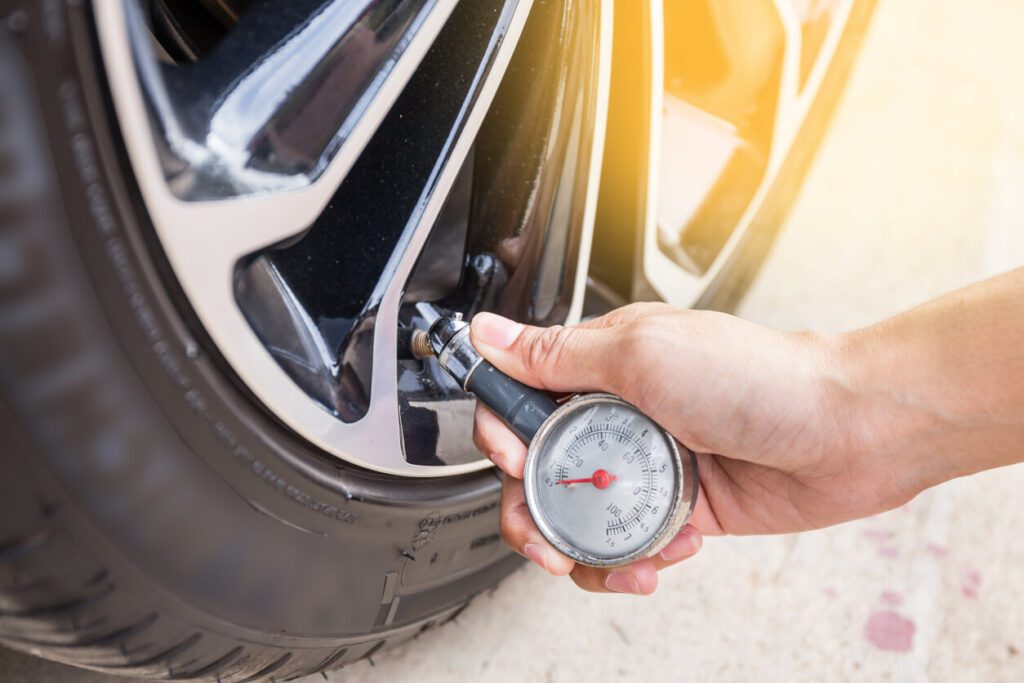Today, most vehicles have a low tire pressure warning light known as the Tire Pressure Monitoring System (TPMS). This system notifies you when one or more of the vehicle’s tires are low on pressure by illuminating a dashboard warning light. Just like any light on your dashboard, when the low-pressure light turns on, you’ll want to investigate the situation right away.
Driving on tires with low pressure may affect your vehicle’s performance, handling, and, most importantly, your safety on the road. Underinflated tires become flexible and generate more heat, which can cause the internal components in the tire to overheat. An overheated tire can cause a blowout, which can endanger your safety.
Here’s Why You Shouldn’t Ignore the TPMS Light:

Low Tire Pressure Is Costly
Tires that are low on pressure cannot make proper contact with the road, causing significant and uneven wear. Uneven tread wear reduces the tire’s life dramatically, which leads to costly and premature replacement.
Low Tire Pressure Reduces Fuel Economy
An underinflated tire has a greater resistance to movement. This resistance causes the engine to work harder to create the energy needed to move, increasing the demand for fuel to power the engine. The EPA states that by ensuring your tires are inflated to the appropriate pressure, you may be able to improve gas mileage by up to 3 percent.
Low Tire Pressure Impedes Handling
Low tire pressure deprives your tires of the grip and responsiveness necessary in helping to avoid accidents. Your car should be able to handle any demand you place on it, including traction when braking and cornering.
The sidewalls of underinflated tires are more flexible than intended for braking and cornering. This instability causes the tread to wriggle, reducing traction and contact with the road. Additionally, braking distance increases and steering becomes more difficult due to a slower response.
Low Tire Pressure Can Impact Your Safety
While driving with slightly low tire pressure is not urgent, don’t delay adding air to your tires. Tires severely low on pressure can lead to blowouts that put your safety and others at risk.
Reduced traction, especially in adverse weather conditions, prohibits your vehicle from getting a firm grip on the road, leading to hydroplaning, blowouts, or accidents. Blowouts are often unforeseen and may cause you to lose control behind the wheel. This becomes especially dangerous when you’re traveling on highways at higher speeds.
You’re less likely to have a blowout in heavy traffic due to stop-and-go conditions that prevent the tire from turning too quickly and generating heat. However, this does not mean the tire is impervious to damages at slower speeds. A tire with reduced air pressure is softer and more easily punctured by debris and other objects on the road.
My Low Tire Pressure Light Came On, What Now?
When the TPMS light comes on the dashboard, get to a safe area and immediately check the pressure in all four tires. If one or more of the tires is low on air, increase the pressure according to the manufacturer’s specifications, which are on the driver’s side door panel.
Conversely, too much pressure in a tire may also trigger the TPMS light. If this occurs, check the pressure of all four tires and deflate until the tire reaches the proper pressure.
Your TPMS light illuminates in different ways. It may turn on while driving, flash on and off, or flash on and off and stay on. Here’s what to do in each case:

TPMS Illuminates While Driving – If the TPMS light comes on while you’re driving, it indicates that at least one of your vehicle’s tires does not have the correct air pressure. Locate a fuel station to check the pressure of your tires and add air as necessary.
Flashing TPMS – If the TPMS light turns on and off intermittently, it could be due to fluctuating temperatures. This is common in climates where the pressure drops overnight and increases during the daytime. The light may deactivate itself once temperatures rise or the vehicle warms up.
Suppose your low tire pressure warning light returns once the temperature decreases. In this case, it indicates that the cause is related to shifting temperatures. For safety purposes, continue to check the air pressure to ensure this is the case.
Flashing On-and-Off, Then Solid On – When the TPMS light flashes for one to two minutes after starting your vehicle and stays on, the system has likely malfunctioned.
It is not uncommon for the sensors in the TPMS system to require replacement. Take your car to an automotive center as soon as possible so a technician can inspect the system properly. If you cannot take the vehicle in right away, check your tires and monitor the pressure until you can get to a service center.
Check For Low Tire Pressure During Your Oil Change
When you visit Sun Auto Service, you get so much more than just an oil change. All of our oil changes come with a free tire rotation, inspection, and pressure check. Schedule your next oil change or tire service at your neighborhood Sun Auto Service today!
